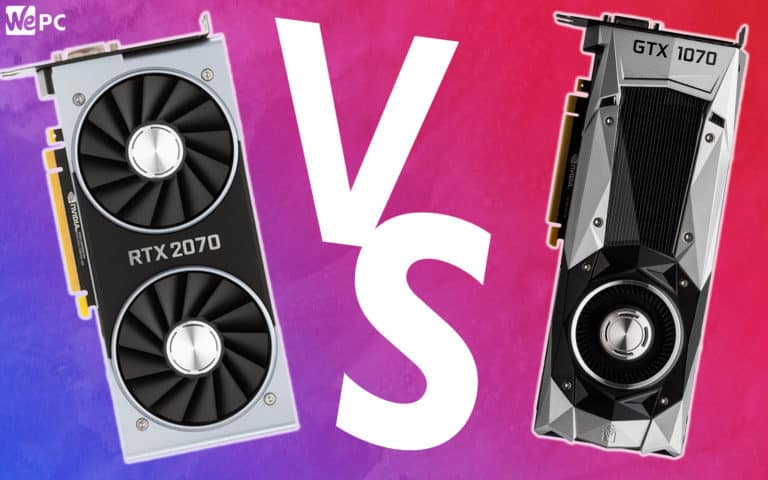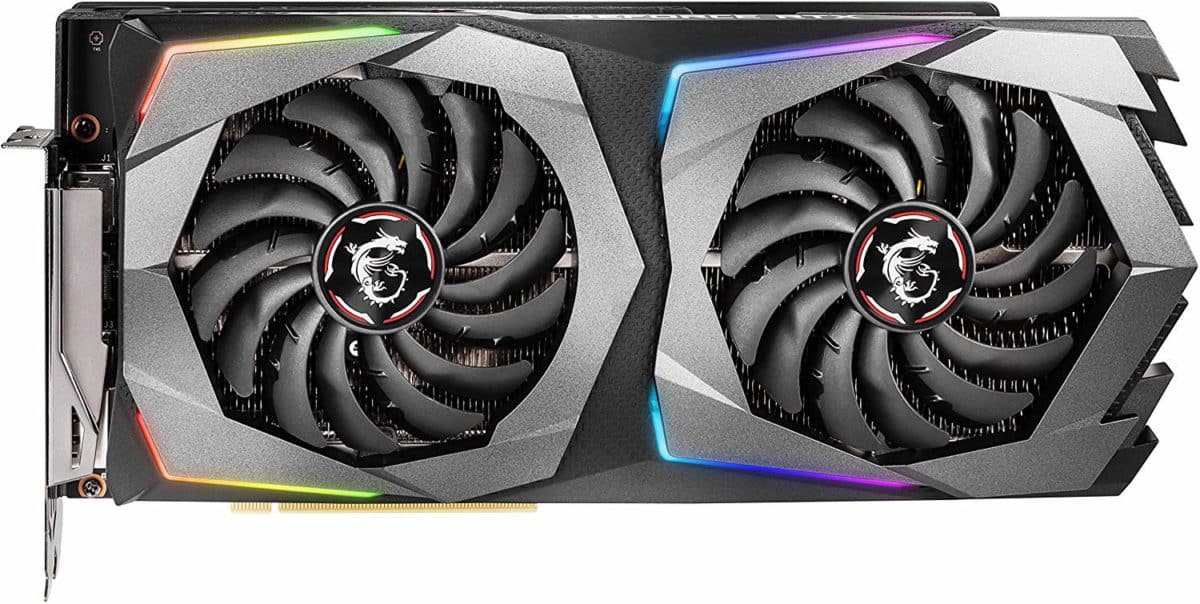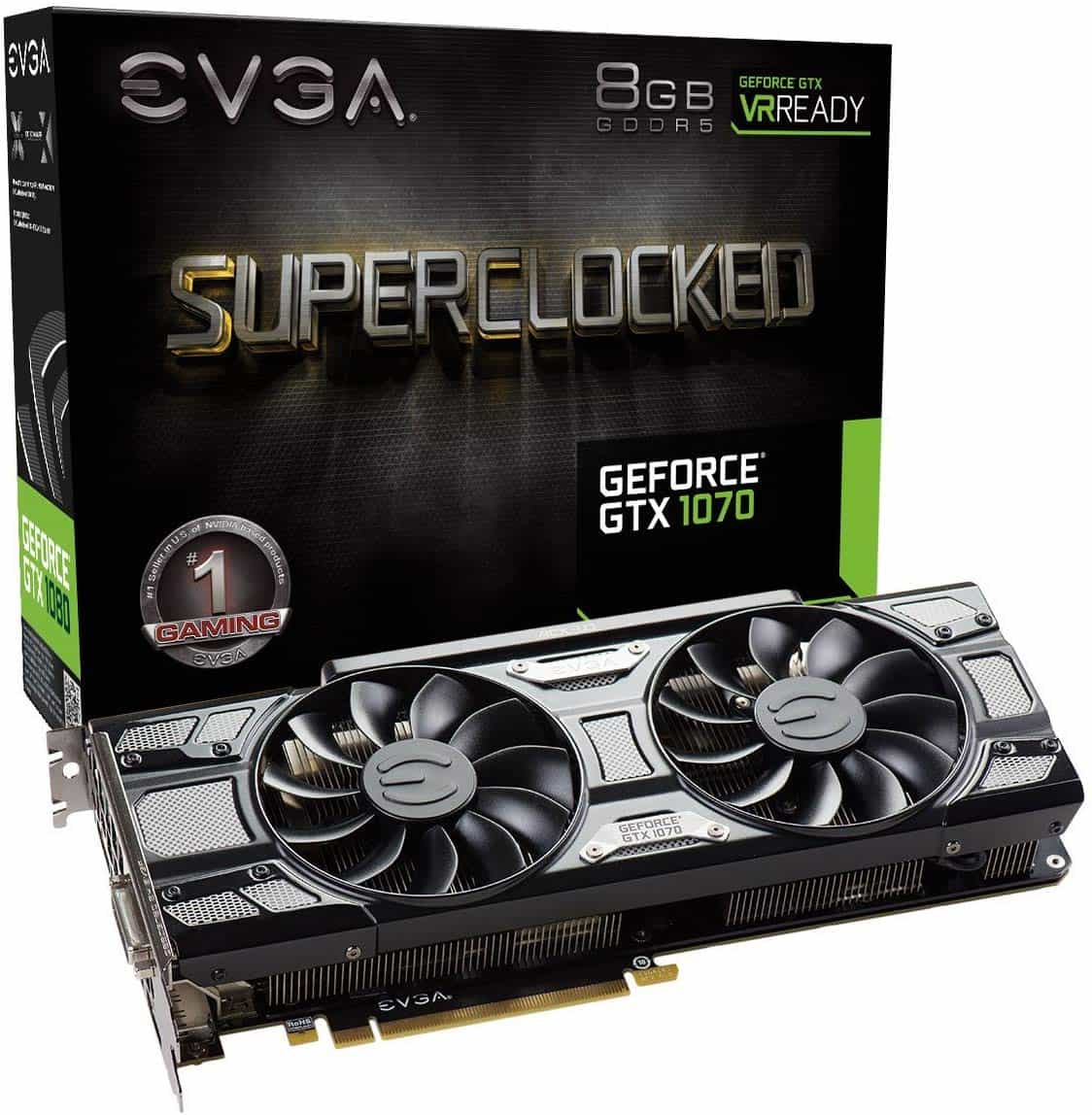RTX 2070 vs GTX 1070
In this article, we examine and compare the original GTX 1070 and the newer RTX 2070 to see which GPU comes out on top.

Even though RTX GPUs were made with advanced technology, their position in the market is still pretty indivisible from Nvidia’s original line of GTX GPUs, which can lead to a lot of confusion if you’re looking to update your graphics facilities.
Well, one of the best ways to glean an understanding of the overlap and to get a sense of the scale of a newer series, is to take the mid-level GPU from the older series and match it up with its respective replacement for a classic ‘vs’ comparison, and that’s exactly what we’ve done. Welcome to the RTX2070 vs GTX 1070 showdown!
Architecture
Despite donning the same ‘70’, marking their mid-series position, the architecture of these two GPUs couldn’t be more different. The GTX card was developed with GP104-200-A1 Pascal microarchitecture variant, while the RTX 2070 is built up from the more advanced Turing microarchitecture, the TU106-400A-A1 variant to be precise.
The 1070 contains 1970 CUDA cores, a respectable amount for Pascalian architecture, but its 20-Series counterpart is packing a stonking 2304, and they’re Turing cores too. By allowing two different data paths to concurrently compute instructions, Turing CUDA cores are said to offer 50% enhanced performance per core. That means, theoretically, that compared to the 1070, the 2070 has 4608 cores.
The GTX 1070 can’t claw any dignity back on other architectural accounts either. It has 1920 shader units to the 2070’s 2304, 120 texture units to the 2070’s 144, and manages to draw a tie for render units with 64.
Where the 1070 does excel is clock speed. With a 1506MHz base and 1683 boost, compared to the RTX’s base of 1410MHz and boosted rate of 1620MHz, it hasn’t given up the fight just yet.
Cooling
Does packing all that extra tech into the 2070 chip mean it burns a hole in your case, the floor, the next floor, and down into the mantle of the earth, or does newer architecture mean streamlined and cool performance, even when pushed? Well, it does suck more power than the 1080, but it’s also an open-air GPU, meaning there shouldn’t be too much of a risk of it hitting its 89°C capacity. Open-air GPUs do expel quite a bit of heat into your case, though, so it may be worth working on your fan curve.
The 1080 is a good old fashioned blower, so it’s a given that it runs a little hot. It only draws 150 watts which is respectable if you like to keep your gaming as green as possible. It has a thermal capacity of 94°C but even with an intensive gaming workload, it should stabilize at roughly 76°C with a stock fan.
Dimensions
If we’re talking pure die size, the 2070 is quite a bit larger than it’s 1070 ancestor. It’s Turing design rests on a 445mm2 chip. The 1070, on the other hand, has a 314mm2 chip, but is there continuity in scale when considering the finished products? No, strangely it reverts.
Measuring 4.435” (H) x 9” (L) x 2–slot (W), the 2070 has a tad extra height, but it’s nowhere near as long, which probably has a lot to do with the RTX line stacked chip design. The 1070 measures in with a height of 4.376” (H) x 10.5” (L) x 2-slot (W), so if you’re a little short on space in that case of yours, you may appreciate the trim build of the 2070.
Resolution and Frames Per Second
1080p
1440p’s popularity is surging, but the average gamer is still most likely running games in 1080p, so performance at this resolution is essential.
It shouldn’t come as too much of a shock that the 2070 completely kills the 1070 at this resolution. The GTX card put up a pretty good fight during games like CSGO, accepting nail biting 4% loss, just 11fps behind the 2070 on average.
Other than that though, I think it’s fair to call it a massacre of sorts, the 2070 claiming 31 and 36% victories in GTAV and Fortnite. In summation, you can expect a 33% better performance in terms of fps from the 2070.
1440p
We thought boosting the resolution would only cause the 1070 more trouble, and we were right, but it wasn’t as disastrous as we believed it would be. Scoring an average of 69fps to the 104.9fps of the 2070, the percentage gap between them widened 1% for a total of 34%.
4K
There’s no way to sugar coat it here. The jump to 4K buried the 1070 and widened the percentage gap to full on veritable 36%. Gap is really an understatement. That’s more of a canyon.
Ray Tracing
The 2070 continues its reign of beautiful terror with its special cores and ray tracing capabilities.
Ray tracing is only supported by a select few titles (although the list is growing fast), but it’s some truly awesome tech that replaces rasterization and provides awesome real-time rendering of global illumination.
VRAM
I don’t think it’ll shock you to know that the 1070 doesn’t claim a miraculous victory in our last category. It does have the same 256-bit bus interface as the 2070, but it’s 8GB GDDR5 buffer, 256GBps bandwidth, and overall memory speed of 8GBps, fall well beneath the RTX card’s stats.
Even though it seems like we’re flogging a dead GPU horse at this point, here’s the 2070’s stats for information’s sake. It sports an 8GB GDDR6 buffer, boasts 448GPs bandwidth, and clocks out at mammoth 14GBps.
Verdict
The GTX takes a crushing defeat here. It showed a glimmer of hope at times, with its clock speeds for instance, but it just doesn’t hold a candle to the RTX 2070. This kind of brutality may have been hard to get read at certain points, but it sheds some light on the RTX family’s position in the GPU market.
If you’re wondering whether you should upgrade from the 1070 to the 2070, it’s difficult to say. If you game in 4K, the 2070 is a sterling option, but it is quite pricey. If you stick to 1080p and 1440p, it won’t disappoint, but on a frame per dollar rate, it’s not the best value for money. You may consider selling your 1070 and buying a 1080. It might offer the boost in performance you crave.




